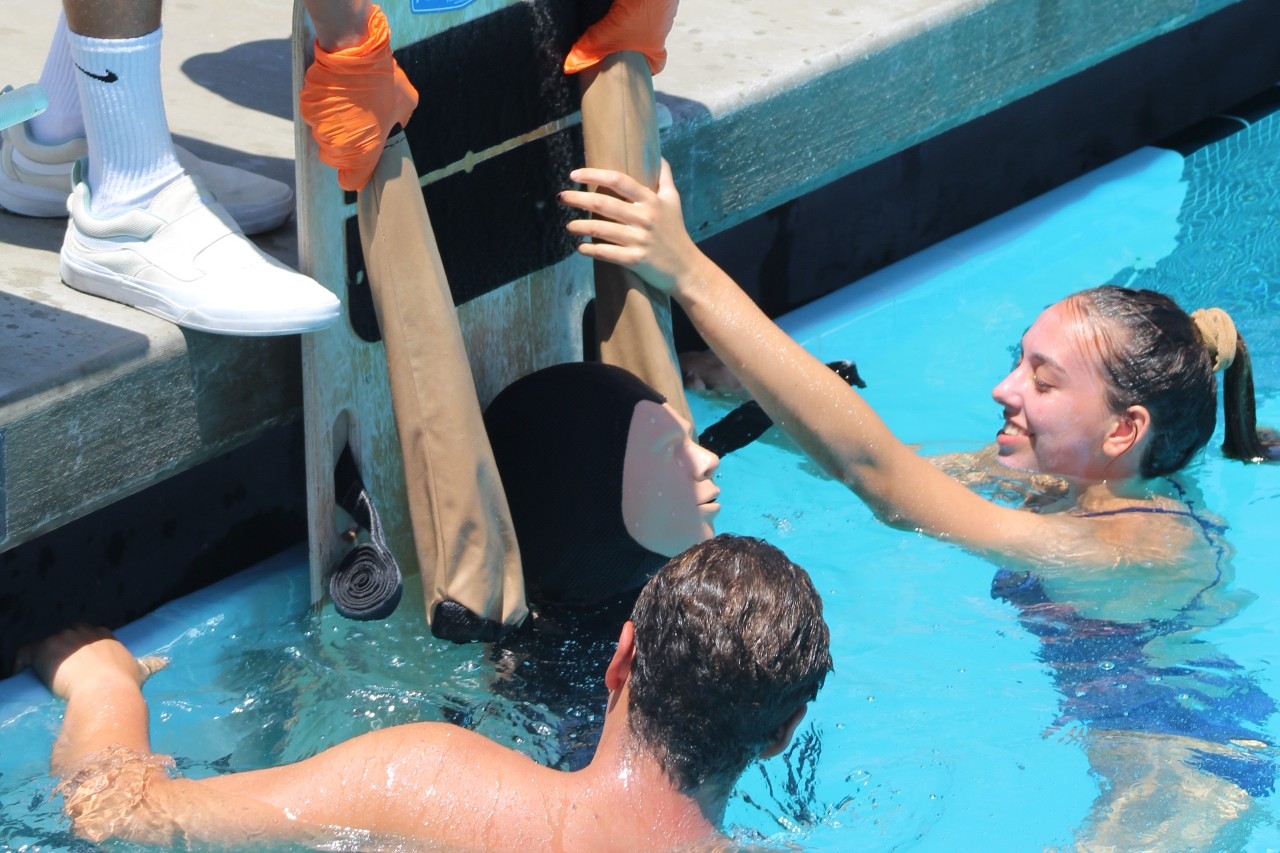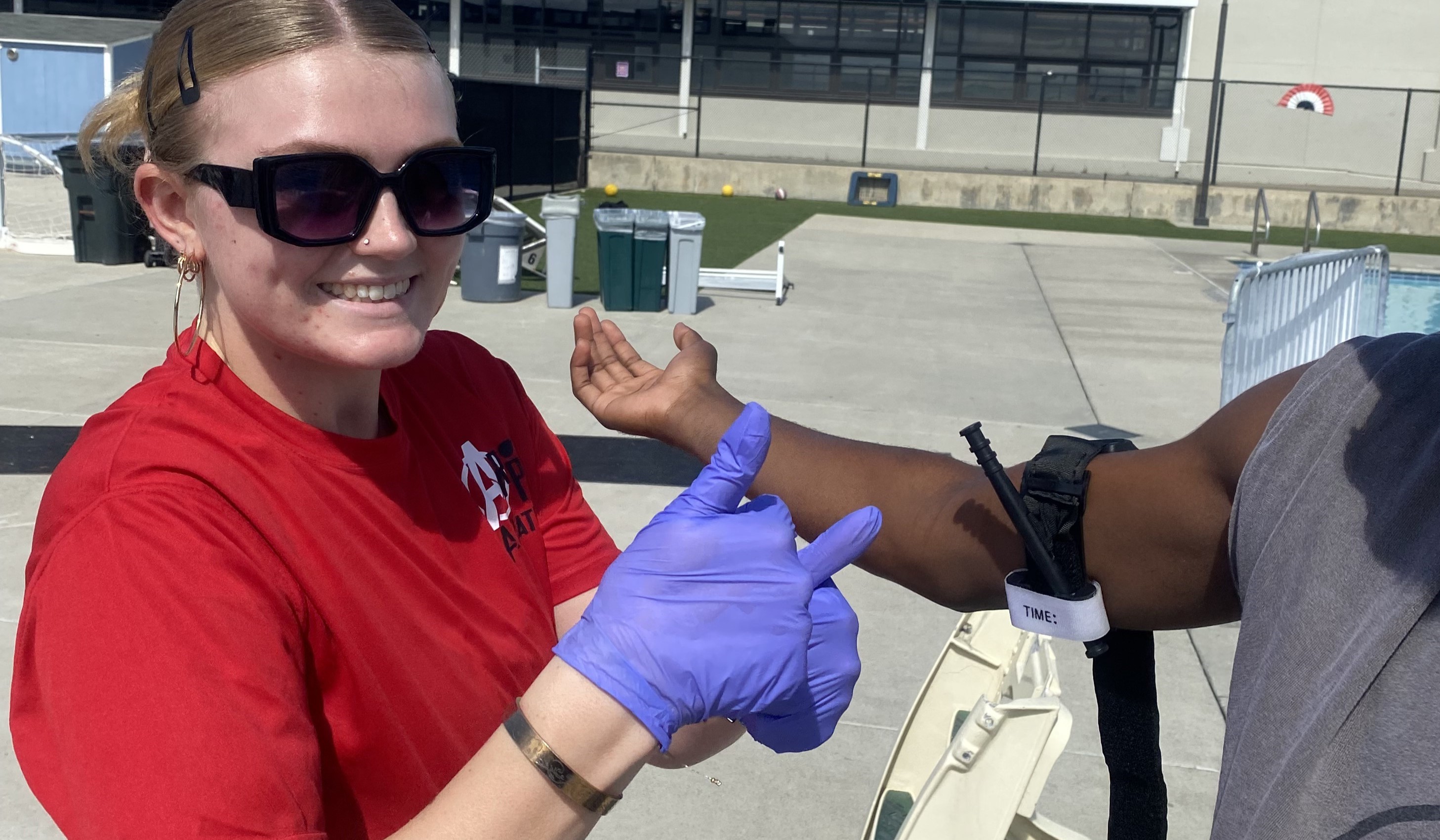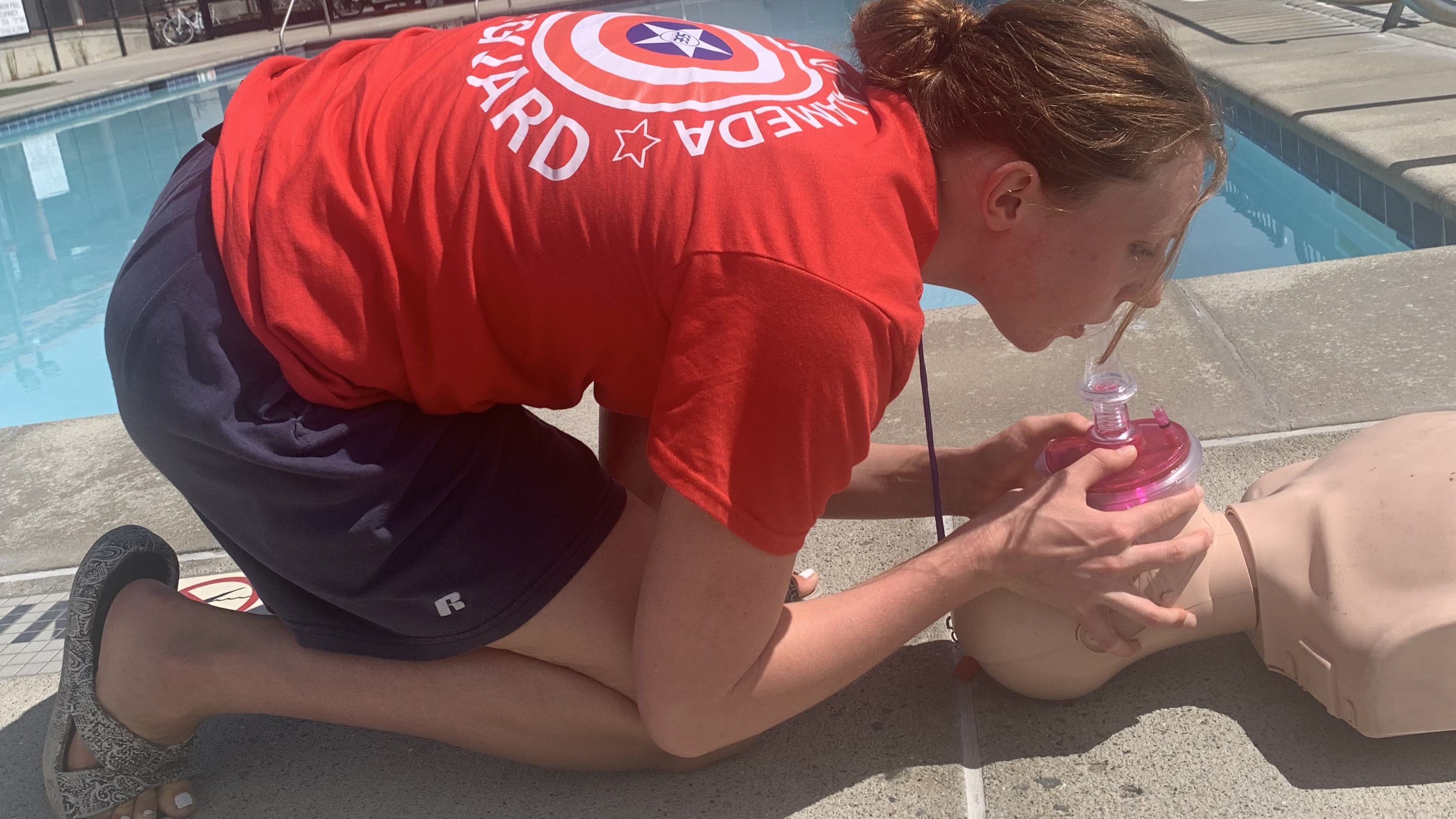Disclaimer: All training and in-service techniques in this article must be vetted by your agency, certifying organization, and local health officials prior to implementing. Also, in a rapidly changing environment, stay up to date on what training and engineering controls are most relevant.
It could have been a while since your agency ran an in-service training that included current staff, returning staff and new hires.
The amount of time that has passed since a lifeguard has trained could be one to 21 months. The focus of in-service should be to synchronize all staff to an expected level of speed for making the rescue and an expected level of proficiency working as a team for extrication and patient care. Goals can be turning the slow rescuer to a fast one, training solo then converting solo rescuers to a team, and lastly, having a fast and efficient team response for extrication and patient care.
The following drills are designed for a victim who has stopped breathing but has a pulse, with the mechanism of injury indicating there is no need for spinal precautions. A manikin can be used as a substitute for a live victim, depending on your agency’s COVID-19 protocols and resources.
NOTE: If the in-service will have new hires, provide senior staff the opportunity to do the drills before the in-service. This allows senior staff to polish their skills, then demonstrate their proficiency during the in-service. This also sets up the level of proficiency that is expected from new hires.
PASSIVE VICTIM DRILL: An unresponsive victim is passive, face-up on the surface in shallow water with feet pointing away. For consistency, line up all victims directly under the backstroke pennants (flags). Rescuers start from the wall with one hand on the wall, one on the rescue tube. As the drill is repeated, rescuers will transition from starting in the water to starting on the deck.
Objective: The rescuer will safely and quickly secure the victim onto a rescue tube with victim’s airway open and above the surface of the water. The rescue tube should completely support the victim, leaving the guard hands-free.
Timing goal: Victim must be secured within 10 seconds. Repeat the drill and reduce the time until the rescuer secures the victim to the rescue tube in 6 seconds. From here, have the lifeguard transition to an entry from the deck. Remind rescuers to enter the water quickly and safely, and to avoid jumping on or injuring the victim or themselves when entering. Continue until guards can secure victim to the rescue tube in 3-4 seconds. The time between each drill should be no more than 10 seconds. Keep up the rapid pace until the timing goal is achieved.
EXTRICATION 1 DRILL: Unresponsive victim is passive and submerged in shallow water, directly under backstroke pennants. Rescuer will start from the deck with rescue tube in hand. Note: This should immediately follow the Passive Victim Drill.
Objective: Guard safely and quickly enters the water and brings victim’s airway above surface.
Timing goal: Victim’s airway needs to be above the surface in 8 seconds. Repeat and reduce the time until the rescuer brings the victim to surface in 6 seconds. Add the option of not taking the rescue tube. Continue to repeat until the rescuer can bring the victim’s airway to the surface in 4 seconds. Once rescuer demonstrates proficiency and speed, move to the Extrication 2 Drill.
EXTRICATION 2 DRILL: Unresponsive victim is passive and submerged in shallow water directly under the backstroke pennants. Two rescuers start from the deck, rescue tubes are an option.
Objective: Rescuers safely and quickly enter the water and bring victim’s airway above surface, quickly and safely bring victim to the side of the pool. Note: This drill should immediately follow the Extrication 1 Drill.
Timing goal: Victim’s airway must be above surface, and they must be at the side of the pool in 12 seconds. Repeat the drill and reduce the time until rescuers bring victim to the surface and the side of the pool in 8 seconds. Once rescuers can demonstrate proficiency, move to these variations:
• 3-person rescue team completing the drill in 5-6 seconds
• 4-person rescue team completing the drill in 5-6 seconds
• 3- or 4-person rescue team with the victim one additional body length away from the backstroke pennants.
EXTRICATION 3 DRILL: An unresponsive victim is passive and submerged in deep water directly under the backstroke pennants. Two rescuers start from the deck. Two will be on the deck with a backboard available.
Objective: Rescuers will safely and quickly enter the water, bring victim to surface, and move to the side of the pool. All rescuers assist in extricating the victim quickly and safely onto the deck.
Timing goal: The victim must be quickly and safely on the deck within 25-30 seconds. Repeat and reduce the time until rescuers can safely complete the drill within 15-20 seconds. Once they can demonstrate proficiency quickly and safely, move to these variations with the same timing goal:
• 3-person team: two on land, one in the water
• 3-person team: one on land, two in the water
• 2-person team: one on land, one in the water
• Lifeguard(s) must start with rescue tubes in hand, with option to not use tube once drill begins.
As we move closer to “normal” opening and providing recreational swimming, I foresee that COVID-19 guidelines will probably remain when it comes to providing patient care. Having our staff at a high level of readiness is imperative.
Have a safe and healthy season — and keep training.
Go to aquaticsintl.com to learn about the Patient Care Drill (Add-On to Extrication 3 Drill).



